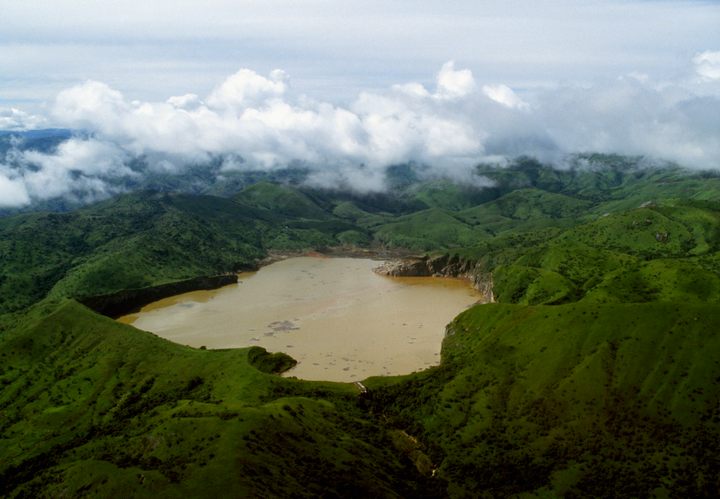
The Invisible Threat Beneath Cameroon’s Deadly Lake Nyos
Thousands died in 1986 when the crater lake unleashed a cloud of toxic gas. Could it happen again?
This story is excerpted from John Richard Saylor’s Lakes: Their Birth, Life, and Death, published in June 2022 by Timber Press.
On the night of August 21, 1986, in Cameroon, Lake Nyos erupted. During that night, the lake, set in the crater of a dormant volcano, emitted not lava, not ash, not hot mud, but instead a massive cloud of cool carbon dioxide gas that silently raced down the slope, killing almost everything below. About a quarter of a cubic mile of carbon dioxide was released from Lake Nyos that night, traveling downhill at close to 45 miles an hour. In the nearby villages, 1,746 people died, most as they slept. In the town of Nyos itself, virtually every soul died.
Unlike many volcanic disasters, the Nyos event did not occur a thousand or even a hundred years ago. Occurring as it did in 1986, scientists were able to travel to the site within days. Accordingly, we have a detailed picture of what happened at Lake Nyos—one that is both terrifying and strange.
For the few survivors of the disaster, the situation they woke to must have extended beyond terror and into the horribly surreal. Some of the survivors did not wake for two days, and when they did, everyone around them had been killed—their families were dead and their neighbors were dead. Stumbling out of their houses, they could be forgiven for thinking that some otherworldly force had descended upon them and that the entire world had come to an end. Every living thing had died. Their chickens lay dead in the streets. Their livestock lay dead in the fields. The corpses of birds lay scattered randomly about. Even the insects were dead; rescue workers who arrived later noted the silence, the absence of insectile cacophony so common to equatorial Africa. It was not until days later that insect life reappeared, arriving at about the same time as the vultures that came from adjacent areas to feast on the bodies.
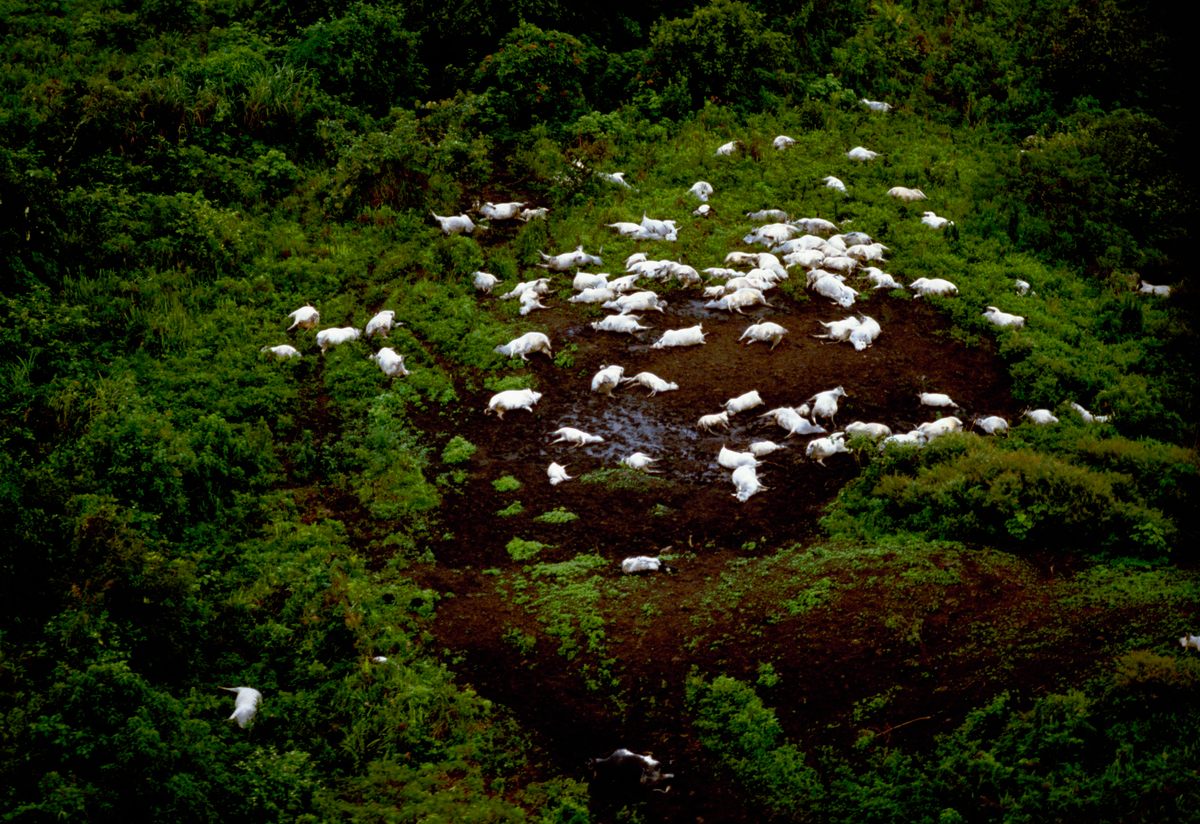
For some time, the cause of the disaster was unclear. Other than the bodies, everything was normal. The sun was shining. The fields were green. Buildings were not knocked down. Nothing was burned. Initially some suspected a virulent epidemic that left only the few with natural immunity to live. But none of the outsiders and government officials who trickled into the villages became ill. It quickly became clear that something else was at play, and that something else turned out to be carbon dioxide.
The key to understanding the Lake Nyos explosion is to understand how carbon dioxide dissolves in water. All gasses have a certain solubility in water, a limit beyond which no more of the gas can be added. For carbon dioxide that limit is about one liter of the gas per liter of water at atmospheric temperature and pressure. Further attempts to add more gas to the water, for example by bubbling gas into the water, will have no effect. The mass of gas in each of the bubbles will stay the same as they rise and ultimately exit the surface.
The solubility of a gas in water can be increased by increasing the pressure and/or decreasing the temperature. And, high pressure and low temperature is exactly what one finds at the bottom of a deep lake. Like many crater lakes, Nyos is quite deep. At 682 feet, its bottom lies over two football fields in length below the surface. At this depth, the pressure is intense: 20 times larger than that at the surface, a pressure where the solubility of carbon dioxide is 20 times larger than at the surface. Since water can hold a liter of carbon dioxide per liter of liquid at atmospheric pressure, at the bottom of Nyos a single liter of water can hold an incredible 20 liters of carbon dioxide. This is rather a lot of carbon dioxide, and since virtually no light penetrates the nearly 700 feet to Nyos’ bottom, it is also quite cold, likely dissolving yet more carbon dioxide.
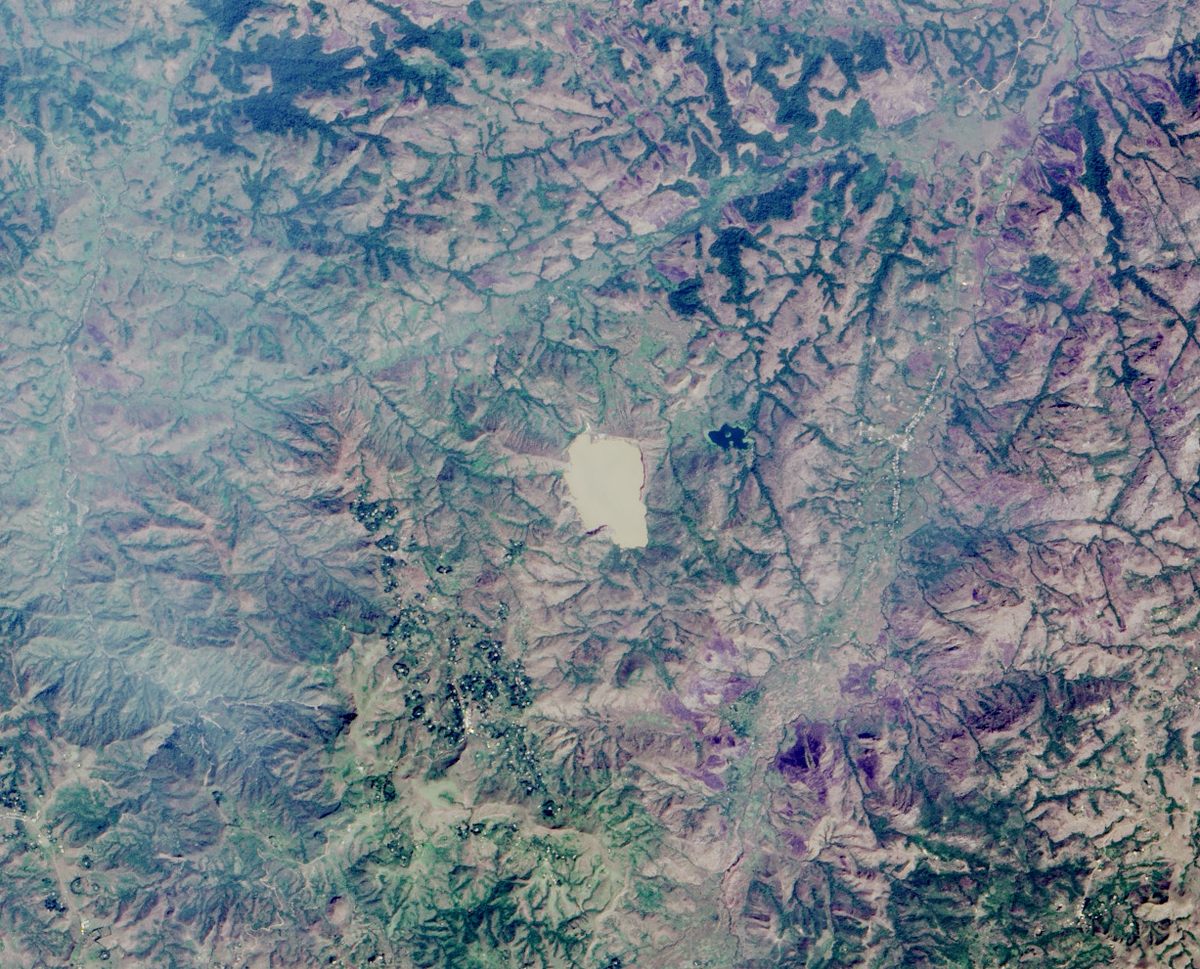
But being able to hold a lot of carbon dioxide gas doesn’t mean that a lake will hold that much gas. There must be a source for that carbon dioxide, and for most lakes that source is the air at the lake surface. So, for most deep lakes, the potential to dissolve carbon dioxide at depth is high, but the actual amount of dissolved carbon dioxide will be quite low since there is no effective way for the surface carbon dioxide to diffuse down to the lake bottom. But in the case of Lake Nyos, the carbon dioxide did not come from the surface. Though long dormant, some volcanic activity does exist deep beneath the floor of Lake Nyos, resulting in the formation of carbon dioxide. The gas seeps up through cracks and fissures in the rock, ultimately bubbling up through the lake floor, introducing it precisely where its solubility is highest.
Imagine these carbon dioxide bubbles, rising from the bed of Lake Nyos. As they rise, they encounter water that is very cold and at a very high pressure—water starved for carbon dioxide. And so, if you were at the bottom of Lake Nyos and could somehow see in the murky depths, what you might observe emerging from some crack in the lake floor would be a plume of bubbles rising upward and getting progressively smaller as they rose, the gas dissolving into the water until the bubbles simply disappeared. Imagine being on the floor of Lake Nyos, surrounded by numerous columns of bubbles rising upward and gradually disappearing, much the way the steam above your coffee cup disappears as it rises through the air above. What would be especially interesting about watching these bubbles disappear would be the dreadful knowledge that as each bubble dissolved, the lake would be getting closer and closer to disaster.
The process of dissolution of carbon dioxide into deep, cold water can go on for a very long time, perhaps a hundred years, a time when nothing untoward may happen. But bit by bit, the lake will become unstable. Year after year, decade after decade, the continuous dissolution increases the potential for disaster. Let’s once again imagine we are at the bottom of Lake Nyos, this time with a bottle. If we fill that bottle with water at the bottom, seal it, bring it to the surface and then open it, the water will violently effervesce, foaming explosively out of the bottle. This is because water that is saturated at the pressures found at the bottom of Nyos becomes supersaturated at the far lower pressure of the lake surface. The carbon dioxide in the water at the lake bottom wants to be in gas form when suddenly exposed to the lower pressure at the lake surface, causing rapid degassing of the water in the same way that a bottle of soda may effervesce when opened. Now, what if instead of a person going to the bottom of the lake and bringing the bottom water to the surface, something else destabilized Lake Nyos, causing some of its deep water to move upward into the warmer, lower-pressure layers of the lake? Should this happen, the upwelling water would release its dissolved carbon dioxide in the form of bubbles. This sounds harmless, but in fact it would be catastrophic.
Nobody is quite sure what caused the bottom water to move upward in Lake Nyos. Some have hypothesized that small seismic tremors were the cause, or perhaps a sloshing of the water in the lake due to a wind of just the right speed. Others have posited the cause may have been steam explosions deep beneath the floor of the lake (not unusual in crater lakes, even of dormant volcanoes), or perhaps some kind of underwater landslide. Whatever the cause, some of the cold water from the depths of Lake Nyos did move upward on the night of August 21, 1986, and once this initial perturbation occurred, disaster was only seconds away.
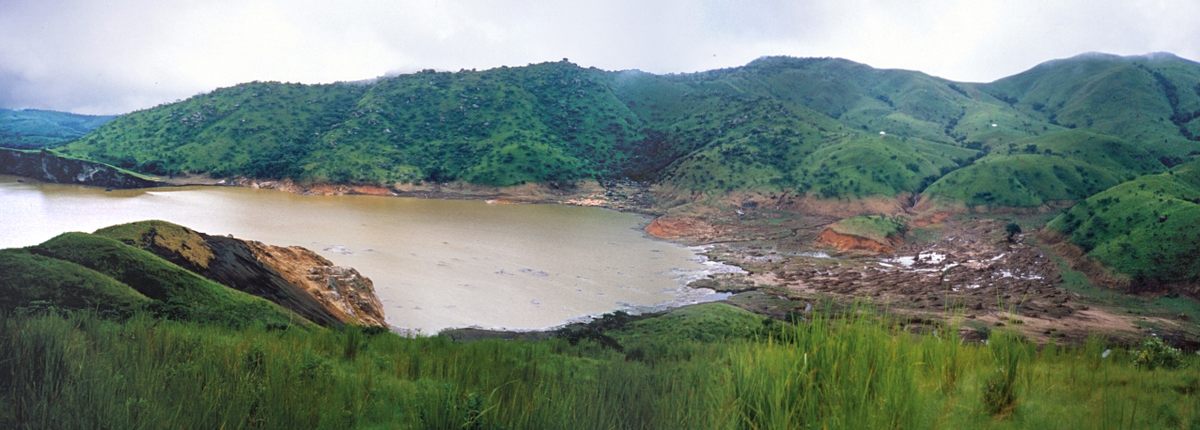
As the cold lake water moved upward, its pressure dropped, and its temperature increased as it encountered the warmer water residing above it. This caused some carbon dioxide to come out of solution and form bubbles. By itself, this wouldn’t have resulted in a disaster. However, the rising bubbles entrained behind them some of the liquid beneath, which in turn became supersaturated as it rose, releasing more bubbles. These bubbles entrained yet more deep water generating yet more bubbles. Thus a feedback cycle formed, each bubble resulting in the formation of other bubbles, each in turn creating more. Such processes go by a variety of names: self-reinforcing processes, positive feedback cycles, exponential growth, and others. Another term for this type of process is explosion. The cold, saturated water that had rested comfortably at the bottom of Lake Nyos for untold years rose to the surface at an explosive rate, causing massive quantities of carbon dioxide to come out of solution all at once. Though deadly, the gas release was relatively quiet. Those who survived reported little more than a rumbling, the sound of something like a distant explosion or rockslide. Most probably heard nothing at all.
Compared to the death tolls that are associated with volcanic explosions, those found at Nyos may seem small. But considering the absence of lava and fire and the darkening of the sun by ash—the fact that these deaths were due to nothing more than an invisible gas, the death toll was staggering. According to the United Nations, 1,746 people died. At least 300 people ended up in the hospital, 3,000 people were displaced, and 3,500 head of cattle were killed. In the town of Nyos itself, there were only four survivors. To give a sense of the volume of gas released, some of the dead were found in villages as far as 12 miles from the lake; dead cattle were found at elevations as high as 330 feet above the crater rim.
That anybody survived at all is a miracle. Perhaps it was the oddities of wind and air flow that enabled some to receive enough oxygen to survive. Perhaps others were located in dwellings with minimal ventilation so that the carbon dioxide didn’t come inside. Perhaps the survivors were in a high location in their dwelling where, like a person trapped in a sinking automobile, there was a bubble of air that allowed them to survive until the carbon dioxide dissipated.
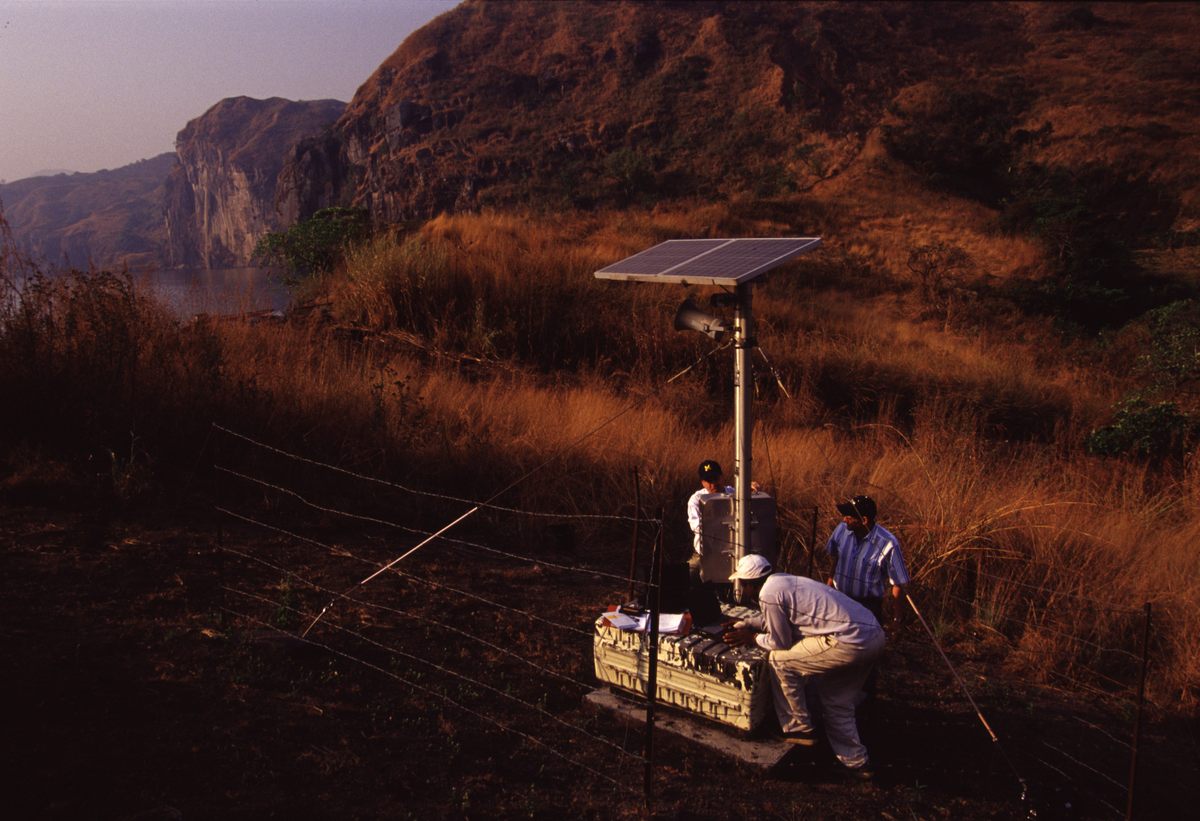
Lake Nyos is now actively studied, and a degassing strategy has been implemented, aiming to prevent a repeat disaster. However, there are other crater lakes in Cameroon. It is estimated that there are 44 in Cameroon’s Northwest Province alone, where carbon dioxide may be building in the depths. A similar explosion occurred at Lake Monoun, also in Cameroon, in 1984, where 37 people died. It is unclear if there are more carbon-dioxide lake explosions in Cameroon’s future or whether such conditions may exist in crater lakes in other parts of the world.
But as bad as the Nyos explosion was, it should be noted that carbon dioxide, while lethal, is not combustible. The same cannot be said for Lake Kivu, a lava-dammed lake. Kivu lies on the opposite side of Africa from Cameroon, bordering Rwanda and the Democratic Republic of the Congo. Like Nyos, gas is released from the floor of Lake Kivu, but in this case, that gas is not just carbon dioxide, but also methane, basically natural gas, like what is used in stoves and furnaces. Exactly what the consequences and risks this has for the people who live around Kivu is unclear. But one should probably take note of two facts: natural gas burns, and Lake Kivu is more than a thousand times larger than Lake Nyos. Due to Kivu’s size and the high population density along the shores of the lake, some have stated that a Nyos-like event at Kivu would result in one of the largest natural disasters in human history. Volcanoes, it seems, present a threat to humans long after their eruptions have echoed into history, continuing to threaten lives along the cool shores of the lakes they create.


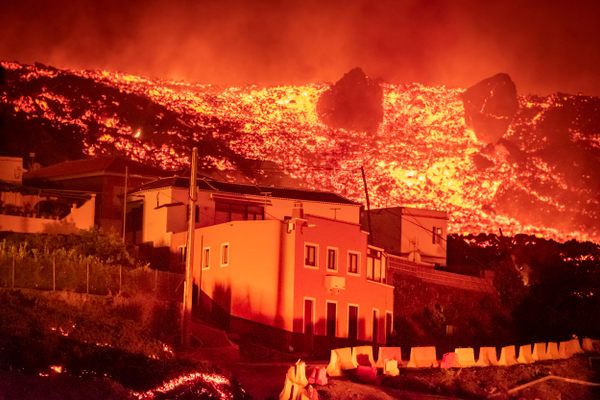

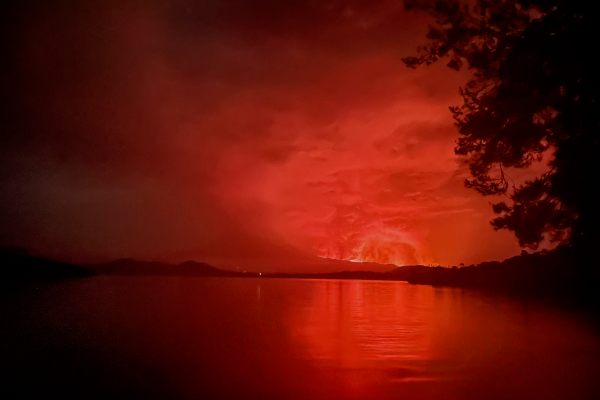






















Follow us on Twitter to get the latest on the world's hidden wonders.
Like us on Facebook to get the latest on the world's hidden wonders.
Follow us on Twitter Like us on Facebook